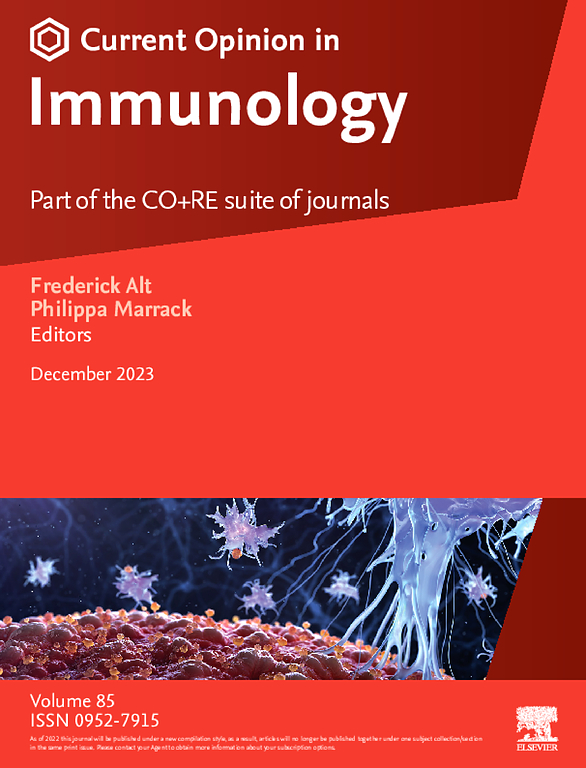Chemokines that govern T cell activity in tumors
IF 6.6
2区 医学
Q1 IMMUNOLOGY
引用次数: 0
Abstract
Local regulation of T cell–mediated immunity to solid tumors occurs at multiple levels, including their recruitment from the bloodstream to the tumor microenvironment (TME), coordinated crosstalk with different subsets of antigen-presenting cells (APCs) controlling their local survival, proliferation, and effector differentiation, as well as their egress from tumors via lymphatics. At each level, chemokines play essential roles, for instance, by guiding directional T cell migration across blood and lymphatic endothelial barriers or by promoting their spatial proximity and direct physical interactions with APCs to enable functional crosstalk. In this article, we will review recent mechanistic insights into the chemokine axes that guide T cell functions in TMEs in light of the emerging functional state heterogeneity of CD8+ effector T cells and our growing understanding of how regulatory T cells restrain antitumor activity.
肿瘤中控制T细胞活性的趋化因子。
T细胞介导的实体瘤免疫的局部调控发生在多个层面,包括它们从血液募集到肿瘤微环境(TME),与不同抗原提呈细胞亚群(APCs)协调串扰,控制它们的局部存活、增殖和效应分化,以及它们通过淋巴从肿瘤中退出。在每个水平上,趋化因子都发挥着重要作用,例如,通过引导T细胞定向迁移穿过血液和淋巴内皮屏障,或通过促进它们的空间接近和与apc的直接物理相互作用来实现功能串扰。在本文中,我们将根据CD8+效应T细胞新出现的功能状态异质性以及我们对调节性T细胞如何抑制抗肿瘤活性的日益加深的理解,回顾最近对TMEs中引导T细胞功能的趋化因子轴的机制见解。
本文章由计算机程序翻译,如有差异,请以英文原文为准。
求助全文
约1分钟内获得全文
求助全文
来源期刊
CiteScore
13.30
自引率
1.40%
发文量
94
审稿时长
67 days
期刊介绍:
Current Opinion in Immunology aims to stimulate scientifically grounded, interdisciplinary, multi-scale debate and exchange of ideas. It contains polished, concise and timely reviews and opinions, with particular emphasis on those articles published in the past two years. In addition to describing recent trends, the authors are encouraged to give their subjective opinion of the topics discussed.
In Current Opinion in Immunology we help the reader by providing in a systematic manner: 1. The views of experts on current advances in their field in a clear and readable form. 2. Evaluations of the most interesting papers, annotated by experts, from the great wealth of original publications.
Current Opinion in Immunology will serve as an invaluable source of information for researchers, lecturers, teachers, professionals, policy makers and students.
Current Opinion in Immunology builds on Elsevier''s reputation for excellence in scientific publishing and long-standing commitment to communicating reproducible biomedical research targeted at improving human health. It is a companion to the new Gold Open Access journal Current Research in Immunology and is part of the Current Opinion and Research(CO+RE) suite of journals. All CO+RE journals leverage the Current Opinion legacy-of editorial excellence, high-impact, and global reach-to ensure they are a widely read resource that is integral to scientists'' workflow.

 求助内容:
求助内容: 应助结果提醒方式:
应助结果提醒方式:


